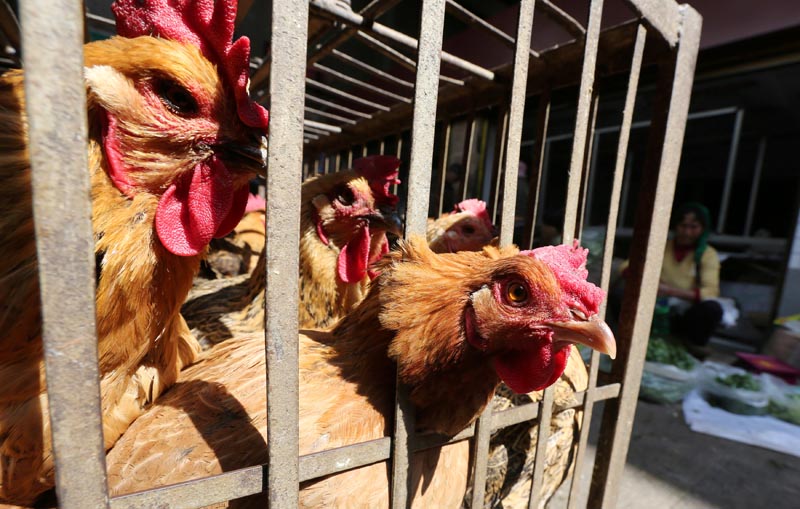Bird flu outbreak in Kathmandu
Kathmandu, May 25
H5N1 influenza virus, commonly known as bird flu, has been detected in two farms in the capital.
The virus was detected in farms belonging to Hira Tamang at Dharmasthali in Tarkeshwor Municipality and Shanti Tamang at Lambagar of the same municipality. After the bird flu was detected and confirmed in ducks, the authorities culled 5,451 ducks and 180 hens, besides destroying 3,720 eggs of ducks. Up to 250 kg feed was also destroyed. “We culled ducks and hens after ducks tested positive for bird flu,” said Dr Keshav Prasad Premy, joint secretary, Ministry of Agriculture, Land Management and Cooperatives.
According to the Chief of Epidemiology and Disease Control Division Dr Kedar Century, after the Directorate of Animal Health confirmed detection of bird flu it asked EDCD to send necessary manpower for assistance. “We sent our staff for investigation and they have collected throat swab of two people in the area who showed symptoms of bird flu,” added Dr Century.
As per World Health Organisation, H5N1 is a type of influenza virus that causes a highly infectious, severe respiratory disease in birds called avian influenza (or bird flu). Human cases of H5N1 avian influenza occur occasionally, but the infection doesn’t readily spread from birds to persons. However, when people get infected, the mortality rate is about 60 per cent.
The symptoms of H5N1 infection may include fever (often high) and malaise, cough, sore throat and muscle ache. Other early symptoms may include abdominal pain, chest pain and diarrhoea. The infection may progress quickly to severe respiratory illness (for example, difficulty in breathing or shortness of breath, pneumonia, Acute Respiratory Distress Syndrome) and neurologic changes (altered mental status or seizures).






